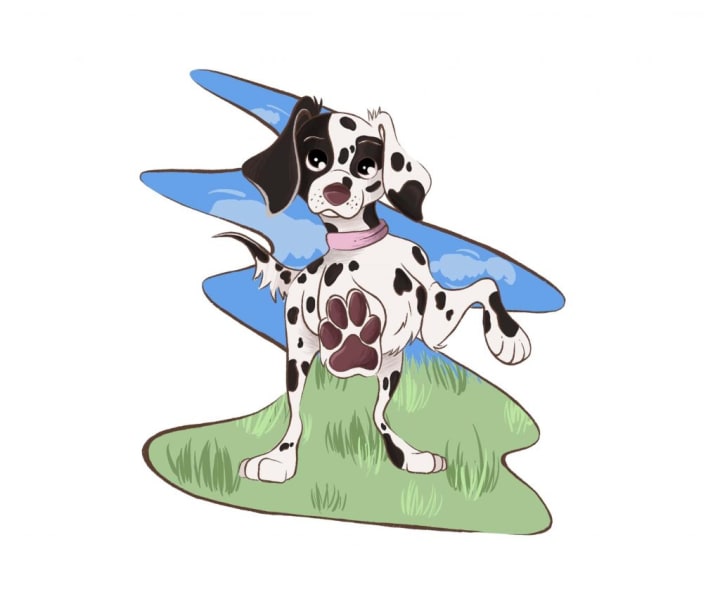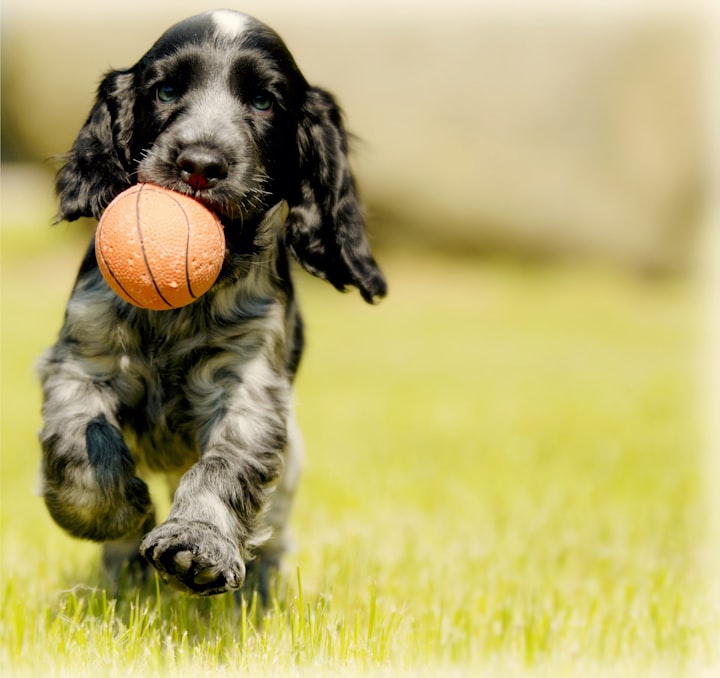
IV. The Toes and Metacarpal/Metatarsal Pads: Supporting Canine Weight Distribution and Balance

A dog's paw is a fascinating structure comprised of various components, including toes and metacarpal/metatarsal pads. These elements play a crucial role in weight distribution, balance, and overall mobility. In this section, we will explore the structure of these components, their significance in maintaining stability, and common issues that can affect them.
1. Toes:
Toes, also known as digits, are the individual structures on a dog's paw that correspond to our fingers and toes. They typically consist of five toes on the front paws and four toes on the hind paws. Each toe is composed of several components:
- Phalanges: These are the bones that make up the individual segments of each toe. Dogs have various phalanges, including proximal, middle, and distal phalanges.
- Claws: Claws are the hardened structures at the end of each toe. They provide traction and play a vital role in activities such as digging, gripping, and self-defense.
- Joints: The toe joints, similar to human knuckles, allow flexibility and movement of the toes. These joints facilitate a dog's ability to walk, run, and navigate various terrains.
2. Metacarpal/Metatarsal Pads:
The metacarpal pads are the large pads located higher up on a dog's front paws, while the metatarsal pads are found on the hind paws. They are positioned directly behind the toes and are composed of specialized tissue. These pads serve several essential functions:
- Weight Distribution: The metacarpal/metatarsal pads assist in distributing the weight and impact of each step, helping to minimize strain on the bones and joints. They provide cushioning and support as a dog moves and bears weight on their paws.
- Shock Absorption: These pads play a crucial role in absorbing the shock generated when a dog jumps, lands, or runs on hard surfaces. They help protect the bones, tendons, and ligaments from excessive impact.
- Stability and Balance: The metacarpal/metatarsal pads contribute to a dog's overall stability and balance. They provide additional surface area and grip, allowing dogs to maintain traction and stability on different types of terrain.
- Paw Pad Injuries: The metacarpal/metatarsal pads, along with the paw pads, can be vulnerable to cuts, burns, abrasions, or irritations from rough surfaces, chemicals, extreme temperatures, or foreign objects. Regular inspection and prompt treatment are important to prevent infection and discomfort.
- Toe Injuries: Dogs can experience various toe injuries, including fractures, sprains, dislocations, or nail-related issues such as torn nails or ingrown nails. Prompt veterinary attention should be sought for any toe injuries to prevent further complications.
- Arthritis: As dogs age, they may develop arthritis in the toe joints, leading to discomfort and reduced mobility. Proper veterinary care, including medication, exercise, and joint supplements, can help manage this condition.
3. Common Issues:
While toes and metacarpal/metatarsal pads are designed to withstand regular wear and tear, they can be susceptible to certain issues:
Understanding the structure and significance of the toes and metacarpal/metatarsal pads allows us to appreciate the complex mechanics of a dog's paw. Regular monitoring, proper paw care, and prompt attention to any issues ensure the optimal functioning and well-being of these vital components.
V. The Digital and Carpal/Tarsal Pads: Enhancing Canine Movement and Stability

Within a dog's paw, there are specialized pads known as digital and carpal/tarsal pads, each serving a distinct purpose in contributing to a dog's movement and stability. In this section, we will delve into the function of these pads, their unique characteristics, and their significance in supporting a dog's overall mobility.
1. Digital Pads:
Digital pads are located on the underside of each toe, providing cushioning and traction for a dog's paws. These pads are essential for a variety of reasons:
- Shock Absorption: As a dog walks, runs, or jumps, the digital pads act as shock absorbers, reducing the impact on the bones, joints, and ligaments. This helps to minimize strain and prevent injury during physical activities.
- Traction and Grip: The digital pads are equipped with specialized ridges and textures that enhance a dog's grip on different surfaces. This allows for better traction, preventing slips and aiding in movements such as climbing or changing direction quickly.
- Protection: The thick, resilient nature of the digital pads acts as a protective layer, shielding the sensitive structures of the paw from rough terrains, extreme temperatures, and abrasive surfaces.
2. Carpal/Tarsal Pads:
Carpal pads are located higher up on a dog's front legs, while tarsal pads are found on the back legs. These pads serve important functions in a dog's overall mobility:
- Weight Distribution: The carpal/tarsal pads assist in distributing the weight load when a dog is standing, walking, or running. They help to reduce stress on the bones and joints, ensuring more even weight distribution throughout the limbs.
- Stability and Balance: These pads contribute to a dog's stability and balance, particularly when navigating uneven or challenging terrains. By providing additional surface area and grip, the carpal/tarsal pads enhance a dog's ability to maintain stability and make precise movements.
- Protection: The carpal/tarsal pads, along with the digital pads, provide an extra layer of protection against potential injuries, such as cuts, abrasions, or impacts to the paw.
3. The Interplay of Pads:
The digital pads, along with the carpal/tarsal pads, work in tandem to enhance a dog's movement and stability. They form a cohesive system that absorbs shock, provides traction, distributes weight, and protects the delicate structures of the paws.
It's important to note that the condition of these pads should be regularly monitored. Over time, they may become worn or develop cracks, making them less effective. In such cases, providing proper paw care, including moisturizing the pads and inspecting for any abnormalities or injuries, is crucial for maintaining optimal paw health.
Understanding the function and significance of the digital and carpal/tarsal pads gives us a deeper appreciation for the intricacies of a dog's paw. By promoting paw health and providing appropriate care, we can support our canine companions in enjoying a life filled with mobility, stability, and comfort.
VI. Paw Muscles and Ligaments: Supporting Paw Movement, Stability, and Flexibility

A dog's paw is a complex structure that relies on a network of muscles and ligaments to facilitate movement, maintain stability, and provide flexibility. Understanding the major muscles and ligaments involved in paw function is key to appreciating the intricate mechanics of a dog's paw. In this section, we will explore the primary muscles and ligaments that contribute to paw movement, stability, and flexibility.
1. Flexor Muscles:
The flexor muscles are located on the back of a dog's leg and are responsible for flexing the toes, allowing for movement and gripping. The major flexor muscles involved in paw function include:
- Deep Digital Flexor: This muscle runs along the back of the leg and attaches to the base of the toes. It controls the flexion of the distal (end) phalanges, enabling a dog to curl its toes and grip surfaces.
- Superficial Digital Flexor: This muscle runs parallel to the deep digital flexor and aids in flexing the proximal (near the body) and middle phalanges. It contributes to the overall flexibility and range of motion of the paw.
2. Extensor Muscles:
The extensor muscles are located on the front of a dog's leg and are responsible for extending the toes, allowing for paw extension and forward movement. The major extensor muscles involved in paw function include:
- Extensor Digitorum Longus: This muscle extends from the front of the leg down to the toes. It controls the extension of the distal, middle, and proximal phalanges, allowing the paw to stretch out and propel forward during walking or running.
- Extensor Digitorum Brevis: This muscle is located in the front of the leg and aids in extending the toes, particularly the distal and middle phalanges. It works in conjunction with the extensor digitorum longus to support paw movement and balance.
3. Ligaments:
Ligaments are strong bands of connective tissue that connect bones to each other, providing stability and preventing excessive movement. In a dog's paw, several ligaments play crucial roles in maintaining stability and supporting proper paw function, including:
- Collateral Ligaments: These ligaments are located on the sides of the joints in the toes and provide stability, preventing excessive side-to-side movement.
- Suspensory Ligament: Found at the back of the leg, the suspensory ligament supports the flexor tendons and assists in maintaining the arch of the paw.
- Cruciate Ligaments: These ligaments are situated inside the knee joint and aid in stabilizing the leg during weight-bearing activities.
The coordinated action of the flexor and extensor muscles, along with the supportive ligaments, allows for precise and controlled movement of a dog's paw. These structures work in unison to provide stability, flexibility, and strength, enabling dogs to navigate various terrains, maintain balance, and engage in physical activities.
Proper care, including regular exercise, conditioning, and appropriate warm-up and cool-down routines, can help maintain the health and function of the paw muscles and ligaments. Additionally, if you notice any signs of lameness, pain, or discomfort in your dog's paw, it is important to consult a veterinarian for a thorough examination and appropriate treatment.
By understanding the intricate interplay of the paw muscles and ligaments, we can better appreciate the remarkable capabilities of a dog's paw and provide the necessary care to support their optimal paw health and functionality.
VII. Common Paw Problems: Identifying and Addressing Canine Paw Issues

A dog's paws are susceptible to various problems and conditions that can cause discomfort and affect their overall well-being. Recognizing the signs of common paw problems is crucial in ensuring prompt veterinary attention and appropriate care. In this section, we will discuss several paw problems that dogs may encounter, along with their symptoms and potential treatment options.
1. Cuts and Abrasions:
Dogs can sustain cuts and abrasions on their paw pads or between their toes due to sharp objects, rough surfaces, or excessive scratching. Signs of cuts and abrasions may include:
- Visible wounds or bleeding
- Limping or reluctance to bear weight on the affected paw
- Excessive licking, chewing, or biting at the paw
Treatment may involve cleaning the wound with a pet-safe antiseptic solution, applying a topical antibiotic ointment, and protecting the area with a bandage or boot. In severe cases, stitches may be required.
2. Infections:
Paw infections can occur as a result of open wounds, bacterial or fungal overgrowth, or foreign objects trapped in the paw. Common signs of a paw infection include:
- Redness, swelling, or inflammation
- Discharge or pus
- Foul odor
- Limping or pain
Treatment typically involves a thorough examination by a veterinarian, who may prescribe antibiotics, antifungal medications, or other appropriate treatments based on the underlying cause.
3. Allergies:
Dogs can develop allergies that affect their paws, leading to itchiness, redness, and irritation. Paw allergies can be caused by various factors, including environmental allergens (pollen, dust mites), food allergies, or contact irritants (grass, certain cleaning products). Symptoms may include:
- Excessive licking or chewing of the paws
- Redness or swelling
- Blisters or hives
- Hair loss or thickened skin
Identifying and addressing the underlying allergen is key to managing paw allergies. This may involve allergen avoidance, dietary changes, topical treatments, or medications prescribed by a veterinarian.
4. Paw Pad Disorders:
Paw pad disorders can occur due to dryness, excessive moisture, or certain medical conditions. Some common paw pad problems include:
- Dry, cracked pads
- Hyperkeratosis (thickening of the paw pads)
- Paw pad burns or blisters from hot surfaces or chemicals
Treatment may involve moisturizing the pads with pet-safe balms or creams, providing protective boots, and addressing any underlying medical conditions contributing to the issue.
5. Nail Issues:
Nail problems can range from overgrowth and ingrown nails to nail bed infections or injuries. Signs of nail problems may include:
- Overgrown or excessively long nails
- Nail bed redness, swelling, or discharge
- Limping or pain while walking
Regular nail trimming, either at home or by a professional groomer, is important for preventing nail issues. In cases of infection or injury, veterinary intervention may be necessary to provide appropriate treatment.
It's essential to remember that if you notice any signs of paw problems or changes in your dog's behavior or mobility, consulting with a veterinarian is advised. Early intervention and proper treatment can prevent complications and help your furry companion regain comfort and mobility.
By understanding common paw problems and their symptoms, you can be proactive in maintaining your dog's paw health and providing them with the care they need to lead a happy, active life.
VIII. Paw Care Tips: Ensuring Optimal Health and Well-being for Your Dog's Paws

Proper paw care plays a vital role in maintaining your dog's overall health and well-being. By following a few practical tips, you can help keep your dog's paws clean, healthy, and protected. In this section, we will provide you with essential guidelines for paw care, including cleaning and inspection, nail trimming, paw protection, and promoting optimal paw health.
1. Regular Paw Cleaning and Inspection:
Cleaning and inspecting your dog's paws should be a part of their regular grooming routine. Here's how you can do it effectively:
- Prepare a bowl of warm water and mild pet-friendly shampoo. Gently dip each paw into the water, allowing the shampoo to loosen any dirt or debris. Use a soft brush or cloth to clean the paw pads and between the toes.
- After cleaning, thoroughly rinse the paws with clean water to remove any residual shampoo.
- Towel-dry the paws, paying special attention to the areas between the toes. Make sure to dry them completely to prevent moisture-related issues.
- While drying, take the opportunity to inspect the paws for any signs of cuts, abrasions, swelling, or foreign objects lodged between the toes. If you notice anything unusual or concerning, consult a veterinarian.
2. Nail Trimming:
Regular nail trimming is crucial for your dog's comfort and mobility. Follow these steps to trim your dog's nails safely:
- Choose a quality pair of dog nail clippers appropriate for your dog's size and nail thickness.
- Find a quiet and well-lit area to trim the nails. Make sure your dog is calm and relaxed before starting the process.
- Hold your dog's paw firmly but gently. Trim small portions of the nail at a time, avoiding the quick (a sensitive blood vessel inside the nail). If your dog has dark nails, proceed with caution to avoid accidentally cutting the quick.
- If you are unsure about trimming the nails yourself, consider seeking guidance from a professional groomer or veterinarian.
3. Paw Protection:
Extreme weather conditions can pose risks to your dog's paws. Consider these tips for protecting them:
- During hot weather, avoid walking your dog on hot pavement or surfaces, as it can cause burns and discomfort. Opt for shaded areas or walk during cooler times of the day.
- In cold weather, protect your dog's paws from ice, snow, and harsh chemicals by using dog booties or applying a pet-safe paw balm to create a barrier.
4. Promoting Optimal Paw Health:
Aside from regular cleaning and trimming, these additional practices can help promote optimal paw health:
- Maintain a healthy diet and ensure your dog receives proper nutrition, as it contributes to the strength and condition of their paws.
- Provide regular exercise to keep your dog's paws strong and muscles toned. This helps improve blood circulation and maintains paw health.
- Keep your dog's living environment clean, ensuring that surfaces they frequently come into contact with, such as bedding or floors, are free from debris or irritants.
- Consider using pet-friendly moisturizers or paw balms to keep the paw pads hydrated, especially in dry or harsh weather conditions.
Remember, every dog is unique, and their paw care needs may vary. Be attentive to your dog's individual requirements, and if you have any concerns or questions about their paw care, consult with a veterinarian for professional advice.
By implementing these paw care tips into your routine, you can help ensure that your dog's paws remain healthy, comfortable, and ready for all the adventures that lie ahead.
A dog's paw is a marvel of design and functionality. By gaining a deeper understanding of canine paw anatomy, you can better appreciate the incredible abilities of your furry friend. Furthermore, this knowledge will empower you to provide the necessary care and attention to keep your dog's paws healthy and happy throughout their lives. Remember, a well-cared-for paw is a paw that can confidently explore the world alongside you.
About the Creator
Caninepaw
Welcome to Canine Connection Blog, where we bring together a community of dog lovers






Comments
There are no comments for this story
Be the first to respond and start the conversation.